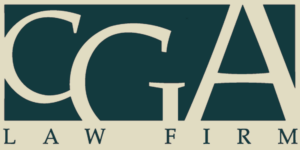
Families First Coronavirus Response Act
On March 18, 2020, Congress passed the “Families First Coronavirus Response Act,” which provides free COVID-19 testing, increases Medicaid funding, and expands food security initiatives and support for those impacted by the COVID-19 public emergency.
The law also provides paid leave and enhances access to unemployment insurance for employees. The key provisions impacting employers are summarized below.
Emergency Paid Sick Leave Act
The section of the law entitled “Emergency Paid Sick Leave Act,” requires employers to provide employees with paid sick leave for absences related to COVID-19 until December 31, 2020.
Covered Employers: Defined as private employers with fewer than 500 employees and government employers with 1 or more employees.
Eligible Employees: Defined as all employees of covered employers – so there are no requirements that employees have been employed for any specific period of time or have worked any specific number of hours.
Reasons for Leave: Employers must provide paid sick time to employees who are unable to work (whether in the office or remotely) due to any of the following:
- Employee is subject to a federal, state, or local quarantine or isolation order related to COVID-19.
- Employee was advised by a health care provider to self-quarantine due to COVID-19 concerns.
- Employee is experiencing COVID-19 symptoms and seeking a medical diagnosis.
- Employee is caring for an individual experiencing symptoms of and seeking diagnosis for COVID-19, or who is subject to a governmental order or medical recommendation to quarantine/self-isolate.
- Employee is caring for children whose schools or places of care have been closed or whose care providers are unavailable due to COVID-19.
- Employee is experiencing any other substantially similar conditions specified by the Secretary of Health and Human Services, except employers of health care providers or emergency responders who can elect to exclude those employees from receiving paid sick leave.
Amount of Leave: Full-time employees will be entitled to 80 hours of paid sick time. Part-time employees will be entitled to paid sick time equal to the average number of hours the employee works in a 2-week period. Paid sick leave may not be carried over from one year to the next
- Paid sick leave taken for an employee’s own condition: paid at the higher of his or her regular rate or the applicable minimum wage, to a maximum of $511 per day and $5,110 in total.
- Paid sick leave taken to care for another individual or for a child whose school or care is unavailable: paid at 2/3 the rate the employee would otherwise receive, to a maximum of $200 per day and $2,000 in total.
The Secretary of Labor will issue guidelines to assist employers in calculating the payment amount for paid sick time within 15 days after its enactment.
Use of Paid Leave: Employers may not require employees to exhaust other forms of paid leave prior to using paid sick leave provide by the Emergency Paid Sick Leave Act. The employee can be required to follow reasonable notice procedures in order to use leave.
Notice Requirements: Employers will be required to post a model notice regarding the Emergency Paid Sick Leave Act, which will be provided by the Secretary of Labor, within 7 days after the law was enacted.
Non-discrimination: Employers may not discharge, discipline, or otherwise discriminate against employees who take paid sick leave, file a complaint or commence any action under the Emergency Paid Sick Leave Act.
Employment Under Multi-Employer Bargaining Agreement: Employers covered by multi-employer collective bargaining agreements may satisfy their paid leave obligations by contributing to a multi-employer fund, plan, or program providing additional paid leave to employees.
Additional Considerations: Carryover and Payout: The Act confirms that the additional paid leave provided shall not carryover beyond 12/31/2020, nor shall it be subject to payout upon separation from employment. Tax Credits: Employers will be entitled to a quarterly tax credit against Social Security taxes for paid sick leave wages paid to employees, up to the maximum amounts set forth above. Employers should promptly consult with their tax advisor to obtain additional specific regarding how to obtain, and account for this credit.
Emergency Family and Medical Leave Expansion Act
The “Emergency Family and Medical Leave Expansion Act,” (“Amendment”) is a temporary amendment to the Family and Medical Leave Act (“FMLA”) which shall remain in effect until December 31, 2020. The Amendment provides eligible employees with paid “Public Health Emergency Leave,” for a qualifying leave due to COVID-19.
Covered Employers: Defined as employers with fewer than 500 employees (unlike the current FMLA definition of employers with 50 or more). The Secretary of Labor may issue regulations to exempt small businesses with fewer than 50 employees if the viability of the business as a going concern would be jeopardized, and these businesses are not subject to civil action by employees under the Amendment (but if not exempted are presumably still required to comply with DOL enforcing).
Eligible Employees: Defined as employees employed for least 30 calendar days (unlike the current FMLA which requires employment for 1 year and a minimum of 1250 hours). Certain health care providers and emergency responders may be excluded.
Qualifying Reason for Leave: The Amendment provides leave when the employee is unable to work (or telework) due to the need to care for the employee’s under-18 son or daughter whose school or place of care has been closed or whose care provider is unavailable because of an emergency declared by a federal, state, or local authority concerning COVID-19.
Payment For Leave: The first 10 days of leave under the Amendment will be unpaid. During this unpaid leave period, the employee can choose to substitute any accrued vacation leave, personal leave, or medical or sick leave. Employees covered by the new Emergency Paid Sick Leave Act can use that leave during this time.
After the initial 10 days of unpaid leave, the employee will be compensated at 2/3 of their regular rate of pay for the number of hours that the employee would otherwise be normally scheduled to work. The calculation will differ for employees with a variable schedule. In all cases, compensated leave is capped at $200 per day and $10,000 in the aggregate.
Notice Prior To Taking Leave: If the need for leave is foreseeable, the employee must advise the employer of the need for leave as soon as practicable.
Benefit/Job ProtectionEmployers with 25 or more employees must restore employees to their positions or equivalent positions when they return from leave, without loss of benefits. There are a number of exemptions to this requirement for employers with fewer than 25 employees.
Tax Credits: Employers will be entitled to a tax credit of up to $200 per day and $10,000 for all calendar quarters for qualified family leave wages paid to each employee, including the cost to provide and maintain a group health plan during the leave period. As referenced above, we advise employers to review the details of these tax credits with their tax professional.
Emergency Unemployment Insurance Stabilization and Access Act of 2020
The Bill also provides funding to stabilize the states’ unemployment compensation programs, and specifically provides for emergency administrative grants to shore up unemployment funding accounts. In order to qualify for these funds, state must ensure that:
Employers provide notification of available unemployment compensation benefits to separating employees.
Claimants have at least two ways to apply for benefits, such as in person, via telephone, or online.
Claimants are provided with timely updates regarding the status of their applications for benefits and any processing issues.
As this situation continues to evolve, we are working diligently to provide general updates and information as quickly as possible, while still responding to immediate client questions and concerns. If you have specific questions or would like additional guidance, please do not hesitate to contact any member of our Employment Law Group.

